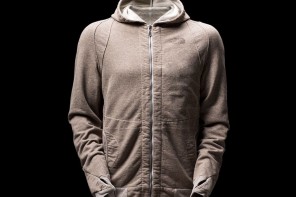The fashion industry represents over USD$180-billion of annual revenue in the United States alone. While youth culture and fashion are intertwined – with many fashion labels and marketers targeting teens between 13 – 18 years old – there’s still a lot that can be done to reinvent and evolutionise the appeal of eco fashion.
Eco fashion courses
Summer Rayne Oakes, a United Nations US Partnership Youth Emissary and Cornell University graduate widely known as “The Eco Model” launched “Ecofashion 101” which she calls “a conscious curriculum with style”. The curriculum has already been launched at a number of high schools in New Jersey and Pennsylvania.
“The curriculum aims to strongly associate students with influential concepts that they are already exposed to outside of school. Connecting environmental, socio-economic and cultural issues in a constructive and suitable way with fashion will ensure added attentiveness within the classroom, help students think outside classroom boundaries, and positively affect learning,” says Oakes.
“Peers, advertisements, as well as celebrities – including actors, designers, musicians, television personalities, and models – influence how youth perceive themselves. Carefully utilizing these cultural icons in educational settings will provide opportunities for youth to develop informed opinions and to create change through personal decisions and creative outlets,” says Oakes.
Mexican teachers combine knowledge to promote eco fashion
Two teachers from Mexico – Bessie Morales Flores and Perla Yepiz Dominguez – have shown that eco fashion and recycled clothing can be taught to teenagers in an engaging and fun way.
Flores, an ecology and biology teacher, and Dominguez, an ethics and culture teacher, joined forces after participating in an Islands Ecology program that focused on conservation. Dominguez and Flores challenged their students to make clothing out of things that would usually be seen as garbage.
The results? Students made 48 dresses from cans, wrappers, newspapers and other items that would normally be found in the dustbin. They also modelled their eco fashion range in a fashion show.
What’s an “Eco Youth Look”?
Wardrobeadvice.com gives a number of tips on how teenagers can “dress like an eco youth” – some of them a tad unpractical – such as “always carry around one of those recyclable green grocery bags with you that have the word Green on it. This way everyone knows you are all about green stuff”.
Essentially, however, Wardrobeadvice.com says that the Eco Youth look isn’t about one particular fashion or look, it’s all about what clothing you are wearing, what it is made of and how it was made.
“This style is not a fashion style; it is a way of life. It is about how you try to reduce your carbon footprint in the world. Wearing vintage clothing is preferred as it is already there and your buying it will not make someone go out and say ‘Hey we need to make more stuff!’ Eco Fashion is all about saving the planet and looking good while you do it,” says Wardrobeadvice.com.
Here are some practical eco fashion tips for teens:
- Don’t snub hand-me-downs: While nobody likes wearing their older sister’s second hand school shoes, some fashion items from your older siblings’ (and parents’) closet can add an entire new look to your wardrobe. Check out your mom’s old vintage tops, jeans, jerseys and belts she doesn’t wear anymore – you might be surprised at some of the cool things you will find!
- A seamstress is your friend: You or somebody in your family might know a seamstress – make friends with the seamstress and you will be able to get your clothes tailored to look like runway items. Old skirts, trousers and dresses can easily be transformed into brand new gear with a few ships and tailoring.
- Trade clothes you don’t wear. You’re not doing anybody any favours by hoarding old clothes that you’ve outgrown. Arrange a bi-monthly gathering with your friends where you can swop clothes, shoes, accessories and other garments.
- Know where your clothes are coming from. The textile manufacturing industry is a major worldwide polluter. Cutting back on clothe shopping and recycling old garments is one of the ways that you can reduce your impact on the environment. Also make sure you check labels – organic cotton, bamboo clothing and other eco-friendly materials are always a good bet.
The liveeco team











